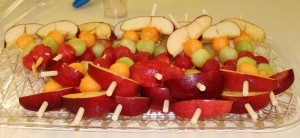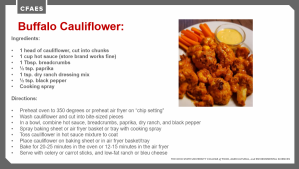Spring is a time of new beginnings and fresh starts. It is a good time to take inventory of our health, financial, and relationship habits to consider what personal spring cleaning may be in order.
A few years ago, I came across the phrase “future self.” The concept is the way we see ourselves at some point in the future impacts our behavior today. When you think of yourself 5, 10, or 20 years into the future, who do you see? Our thoughts, actions, and behaviors today directly affect who we will become in the future.

Hal Herschfield is a researcher of behavioral finance. He and his colleagues asked 1,500 people how similar they felt to their future self. Some people imagined themselves in the future regularly. Others felt distant from this future person. They tended to think more about the present without considering its impact on the future. The study found that people who felt most similar to their future selves had accumulated the most assets over time, even taking into account factors like age, education, and income.
When you think about your current habits and attitudes, where is your trajectory leading you? Research shows us that there are best practices to aim for to give us better opportunities to experience healthy and vibrant lives as we age. We hear about things we should do all the time. However, it is a juxtaposition as American individuals desire to be unique and independent and not compare ourselves to others. However, comparing yourself to health and wealth benchmarks could help add years to your life, or at least a better quality life to your years.
Try this spring-cleaning inventory with a simple check-in regarding your health, your finances, and your relationships:
- What are your numbers compared to recommendations for blood pressure, blood sugar, and cholesterol levels?
- How are you doing eating the recommended 2 to 3 cups of vegetables and 1.5 to 2 cups of fruits recommended for adults to consume each day?
- How much physical activity do you engage in over a week compared to the recommended 2.5 hours of moderate activity?
- In the event of an emergency do you have enough money in your emergency savings to pay for 3 months of household expenses?
- How are you doing with debt? Try calculating your debt-to-income ratio to see. The benchmark is below 0.15 or 15 percent.
- Are you keeping up with friends and family? Are you investing time into the lives of your children, adult children, grandchildren, and other friends and neighbors?
If you are not where you want to be with some of these questions right now, are you moving in the right direction? Choose just one to “spring clean” during the month of April. We may not have arrived yet, but we can be on an intentional journey to the future self we imagine.
Written by: Emily Marrison, Family and Consumer Sciences Educator, OSU Extension Coshocton County
Reviewed by: Dan Remley, Field Specialist, Food, Nutrition, and Wellness, OSU Extension
Sources:
Hershfield., Hal. “Considering the future self”. Hal Hershfield. 2020. https://www.halhershfield.com/considering-the-future-self .
O’Neil, Barbara and others. “Compare Yourself with Recommended Benchmarks”. Small Steps to Health and Wealth™. New Jersey Agricultural Experiment Station, Rutgers, The State University of New Jersey. 2021.https://njaes.rutgers.edu/sshw/workbook/13_Compare_Yourself_With_Recommended_Benchmarks.pdf .
Powell, Sharon. “How much debt is too much?” Home and financial management. University of Minnesota Extension. 2020. https://extension.umn.edu/credit-and-debt/how-much-debt-too-much-debt#sources-652860















